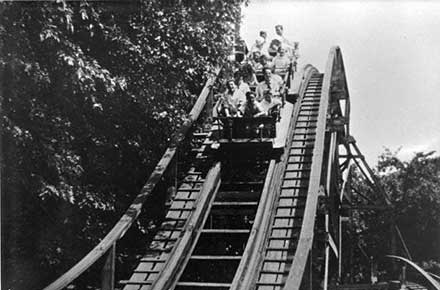Euclid Beach Park
A Cleveland icon for more than 70 years, Euclid Beach Park can trace its origins to the golden age of amusement parks. Multitudes of similar venues appeared near the nation’s cities and along rail lines around the turn of the twentieth century. Seeking to relieve the expanding middle-class of their newly-gained free time and disposable incomes, the Humphrey Family began operating the park in 1901 with great success.
The family, headed by brothers Dudley, Harlow, and David, took over ownership of Euclid Beach Park in what is now North Collinwood, Ohio. Euclid Beach Park would continue to operate until its demise in 1969. Offering free entry, a safe atmosphere, and a morally safe haven, Euclid Beach thrived throughout the first half of the twentieth century while many others collapsed under the financial strains brought on by the Great Depression and white flight. Much of this continued success can be attributed to the aforementioned reasons as well as to convenient transportation to and from the park, to its scenic shores, and to keeping an eye on the competition.
That is not to say that Euclid Beach was without its problems; accidents occurred and a race riot unfolded during the 1946 season. In spite of their continued success, Euclid Beach would eventually lose its appeal to larger, more grandiose parks such as Cedar Point and Kennywood. After five years of financial losses, the amusement park, once the destination for all seeking an escape, surrendered to the changing times and closed its gates permanently on September 28, 1969.
Time would soon erase the remnants of Euclid Beach from its location along the lakeshore. Many of the smaller rides and fixtures were sold off and moved elsewhere; much of what remained fell victim to vandals, fire, and the ravages of the weather. Today, apartments and trailers stand in the place of rollercoasters and popcorn stands. Only the entry arch stands as a reminder of what once was Euclid Beach Amusement Park.
About the Images
While many of the images here originate from the Cleveland Press and Postcards of Cleveland Collections, those capturing the park as it was during the early 1900s are from the Humphrey Glass Negative Collection, which also includes images of the Humphrey Family, early aviation, and competing businesses.












